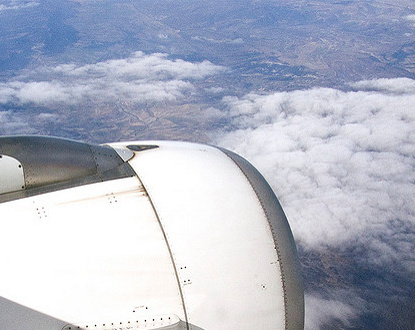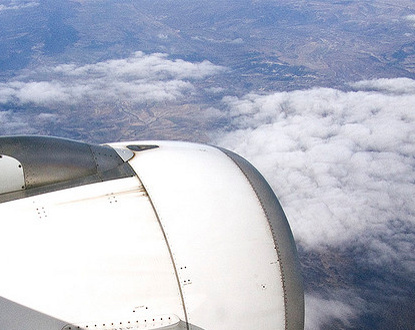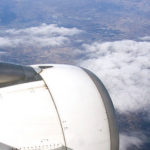A key player in the Cannes area for 80 years, Cannes-Mandelieu Airport has continually contributed to the economic development of the entire department. It is an important economic hub with over 40 companies present, representing 270 jobs and generating 338 million euros in economic benefits in 2008.

Cannes-Mandelieu Airport, complementing Nice Côte d’Azur Airport for high-end tourism aviation, business aviation, and general aviation, is a key element of the Aéroports de la Côte d’Azur strategy. Today, it handles a little over 70,000 general aviation movements, nearly 11,000 of which are for business aviation.
Indeed, it is the preferred platform for business aviation wishing to be based on the Côte d’Azur and have adequate infrastructure for ground handling of its aircraft.
In this respect, Cannes-Mandelieu Airport offers high-quality premium services while strictly adhering to its environmental commitments (aircraft limitation set at 22 tons, regular commercial flights prohibited, airport closed at night).
THE ENVIRONMENTAL APPROACH OF CANNES MANDELIEU AIRPORT
ACHIEVEMENTS OF THE FIRST ENVIRONMENTAL CHARTER
In 2003, the first Environmental Charter was signed. This charter provided tangible results over five years. The figures testify to the efforts made in favor of the environment: over 75% of the goals defined in 2003 were achieved.
A SECOND ENVIRONMENTAL CHARTER 2010-2014
AND A PROTOCOL WITH ACNUSA
THE ENVIRONMENTAL CHARTER
The second Charter, presented on June 14, 2010, in the Environmental Consultation Committee, guarantees the strengthening of the achievements of the previous charter to offer the residents of the Cannes region a better quality of life by implementing actions to protect the environment and reduce noise pollution. It falls within the framework of the Grenelle de l’Environnement.
The State, Aéroports de la Côte d’Azur, residents’ associations, and concerned local authorities have developed the second Environmental Charter, which includes 40 precise and concrete actions framing the activity of the Cannes platform.
These actions are oriented around three main priorities:
- Control noise disturbances and reduce inconvenience
- Work with trust through transparency and consultation
- Consider the environment and ethics
THE FIGHT AGAINST NOISE POLLUTION
The primary goal of this charter is to limit airport noise pollution. Out of the 40 actions, 28 are entirely dedicated to this goal.
Today, the system for noise measurement and trajectory monitoring is inaugurated, which includes, particularly, the installation of four fixed noise management system sensors in the municipalities of La Roquette-sur-Siagne, Cannes la Bocca, and Mandelieu (two sensors) and a correlation with the trajectories. A mobile sensor will be installed in Mougins and Mouans Sartoux for summer noise measurement campaigns. It is a first in France for an airport of this size.
NOISE AND TRAJECTORY MANAGEMENT SYSTEM
THE SYSTEM’S OBJECTIVES
The Airport is surrounded by many residences, and the local population is very sensitive to noise.
The system for managing noise pollution allows continuous monitoring of trajectories and noise level measuring.
This system has three main objectives:
Measure
- Measure and store noise information, trajectories, and management data
- Correlate each aeronautical event with the corresponding trajectory and management data (type of aircraft, destination…)
Quantify
- Study aircraft trajectories
- Detect unusual situations
- Perform long-term statistical calculations
- Study noise reduction solutions
Communicate
- Analyze and respond to residents’ requests
- Explain the functioning of an airport
The noise and aircraft trajectory management system is characterized by:
- a trajectory monitoring system
- a noise measurement system consisting of four fixed stations (permanent measurements) and one mobile sensor (occasional campaigns)
QUANTIFIED DATA
CONTROLLED TRAFFIC
Total traffic in 2010 is slightly down compared to 2009 and lower than that of 2005.
2010 TRAFFIC AT CANNES-MANDELIEU AIRPORT
Aircraft movements 2010 Change/2009 Traffic Share
Business Aviation 10,950 +3.1% 15.5%
General Aviation 44,950 -3.1% 63.6%
State Aviation (Planes and Helicopters) 1,793 -0.1% 2.5%
Commercial Helicopters 13,042 +1.9% 18.4%
Total 70,735 -1.2% 100%
NOISE SCALE
An aircraft is a source of noise pollution in flight and during takeoff and landing phases. Its noise comes from three main sources: its engines, but also its aerodynamics, that is, the flow of air around the fuselage, and the way of piloting.
Measured according to criteria and scientific recordings, the noise generated by an aircraft’s takeoff is 130 decibels, qualifying this index as “painful”.
For reference: the index 90/100 decibels is considered “annoying” and constitutes the safety limit before the risk of deafness (index 110 decibels). It is at index 60 decibels that noise can be defined as “bearable”.



